Description
The instruction for medical use of TsIFRAN medicine the Trade name Tsifran Mezhdunarodnoye the unlicensed name Ciprofloxacin Dosage Form of the Tablet, film coated, 500 mg Structure One tablet contains active agent – ciprofloxacin of a hydrochloride of 582.37 mg (it is equivalent ciprofloxacin) 500.00 mg excipients: cellulose microcrystalline (Avicel PH101), starch corn, starch corn (for pasting), magnesium stearate, talc, silicon dioxide colloidal anhydrous, sodium of starch glikolit (type A), water the cleaned Cover: the water purified opadray OY-S-58910 white (a gipromelloza of E464, the titan E171 dioxide, polyethyleneglycol 400, E553 talc the Description of the Tablet of a capsulovidny form, film coated from white till almost white color, with an engraving 500 on one party and smooth on other party. Pharmacotherapeutic group Antibacterial drugs for system use. Antimicrobial drugs – derivatives of a hinolon. Ftorkhinolona. Ciprofloxacin. The ATX J01MA02 code the Pharmacological Pharmacokinetics Absorption Later properties of intake ciprofloxacin is quickly soaked up from upper parts of a small intestine, reaching the maximum serumal concentration (Cmax) already 60-90 minutes later. Meal does not influence extent of absorption of drug. After reception of a single dose of 250 mg and 500 mg, Cmax makes 0.8-2.0 mg/l and 1.5-2.9 mg/l, respectively. The absolute bioavailability is 70-80%. Cmax has linear dependence on the accepted dose. Distribution the Volume of distribution of ciprofloxacin makes 2-3 l/kg that provides uniform distribution on bodies and fabrics. As extent of linking with proteins of plasma makes only 20-30% and the most part of drug is provided in blood plasma in not ionized form, almost all accepted dose in an untied look extends in extravasated space. Metabolism/removal Is exposed to metabolism in a liver. Elimination half-life makes 3-5 hours. It is generally removed with urine in not changed look, partially – in the form of metabolites. About 10% – are removed through intestines, about 1% of ciprofloxacin is removed with bile. Pharmacokinetics at special groups of patients. Results of pharmacokinetic researches of ciprofloxacin at elderly patients the lengthening of elimination half-life testifies about only insignificant. These differences in pharmacokinetics are not clinically significant. Renal failure. At patients with reduced function of kidneys the elimination half-life of ciprofloxacin is a little longer. In certain cases correction of a dosage can be required. Liver failure. During the preliminary researches with involvement of patients with stable cirrhosis of significant changes of pharmacokinetic parameters of ciprofloxacin it was not revealed. However the ciprofloxacin pharmacokinetics at patients with an acute liver failure is studied not fully. Intermedicinal interactions. In case of reception of a tablet of ciprofloxacin along with food, absorption of drug slows down therefore the maximum concentration of ciprofloxacin in blood is reached almost in 2 hours, but not in 1 hour. At the same time, ciprofloxacin absorption in general is not broken. At the combined use with the antacids containing hydroxide of magnesium or aluminum, the bioavailability of ciprofloxacin can decrease by 90%. Ciprofloxacin is contraindicated to use for the patients receiving tizanidin. Ciprofloxacin reduces clearance of theophylline that can lead to increase in serumal concentration of theophylline and increase in risk of disturbances from central nervous system and other undesirable reactions. Also ciprofloxacin reduces clearance of caffeine and inhibits formation of its metabolite of paraxanthine. Pharmacodynamics action Mechanism. Bactericidal effect of ciprofloxacin is caused by inhibition of enzymes of topoisomerase II (DNK-giraza) and topoisomerases IV necessary for replication, a transcription, a reparation and a recombination of bacterial DNA. Mechanism of development of resistance. The resistance to ftorkhinolona is mainly connected with mutations in genes DNK-girazy, disturbance of permeability of an external cellular membrane of bacteria or activation of proteins of emission which lead to removal of ftorkhinolon from a cell. In the conditions of in vitro the resistance to ciprofloxacin develops slowly by means of multistage mutations. Frequency of development of resistance to ciprofloxacin as a result of natural mutations usually varies ranging from & lt, 10-9 up to 1 x 10-6. Cross resistance. The cross resistance between ciprofloxacin and antimicrobial drugs of other classes is not noted. Ciprofloxacin shows activity concerning the majority of strains of the following bacteria both in the conditions of in vitro, and in clinical practice of treatment of infections. Gram-positive bacteria: Enterococcus faecalis (only the strains sensitive to Vancomycinum), Staphylococcus aureus and Staphylococcus epidermidis (only the strains sensitive to Methicillinum), Staphylococcus saprophyticus, Streptococcus pneumoniae (only the strains sensitive to penicillin), Streptococcus pyogenes Gram-negative bacteria: Campylobacter jejuni, Citrobacter koseri (diversus), Citrobacter freundii, Enterobacter cloacae, Escherichia coli, Haemophilus influenzae, Haemophilus parainfluenzae, Klebsiella pneumoniae, Moraxella catarrhalis, Morganella morganii, Neisseria gonorrhoeae, Proteus mirabilis, Proteus vulgaris, Providencia rettgeri, Providencia stuartii, Pseudomonas aeruginosa, Salmonella typhi, Serratia marcescens, Shigella boydii, Shigella dysenteriae, Shigella flexneri, Shigella sonnei. The activity of ciprofloxacin concerning Bacillus anthracis was shown in the conditions of in vitro and on the basis of use of serumal levels of drug as a surrogate marker. Indications the Uncomplicated and oslozhenny infections caused by microorganisms, sensitive to ciprofloxacin: – respiratory infection. It is recommended to appoint ciprofloxacin in the pneumonia caused by Klebsiella spp., Enterobacter spp., Proteus spp., Esherichia coli, Pseudomonas spp., Haemophilus spp., Branhamella spp., Legionella spp., Staphylococcus spp. – infections of a middle ear (average otitis), adnexal bosoms (sinusitis), especially if these infections are caused by gram-negative microorganisms, including Pseudomonas spp. or Staphylococcus spp. – infections of eyes – infections of kidneys and urinary tract – infections of genitals, including an adnexitis, prostatitis – gonorrhea – infections of an abdominal cavity (bacterial infections of a GIT or biliary tract, peritonitis) – infections of skin, soft tissues – a septicaemia, bacteremia, infections or prevention of infections at patients with the weakened immunity (for example, at the patients accepting immunodepressants or with a neuropeniya) – prevention and treatment of an inhalation anthrax (infection of Bacillus anthracis) Children and teenagers: – at treatment of the complications caused by Pseudomonas aeruginosa at children 6 years with a mucoviscidosis are more senior – prevention and treatment of an inhalation anthrax (infection of Bacillus anthracis) the Route of administration and doses the Drug should be taken on an empty stomach, washing down with enough liquid. The adult In infections easy and moderate severity: 250-500 mg two times a day. In the heavy and complicated infections: 750 mg two times a day. Duration of therapy by Tsifran depends on a look and weight of an infection, at the same time it is necessary to consider the clinical and bacteriological answer at the patient. For the majority of infections the treatment should be continued at least within 48 hours after disappearance of symptoms. The usual duration of therapy is 5 – 10 days, but in the heavy or complicated infections longer course of treatment can be required. The maximum single dose – 750 mg. The maximum daily dose – 1500 mg the dosing Mode in renal failures or a liver At clearance of creatinine from 30 to 60 ml/min. / 1.73 sq.m or its concentration in blood plasma from 1.4 to 1.9 mg / 100 ml the maximum dose of ciprofloxacin has to make 800 mg/days (200-400 mg each 12 h). At clearance of creatinine it is lower than 30 ml/min. / 1.73 of sq.m or its concentration in blood plasma from 2 mg / 100 ml and above the maximum dose of ciprofloxacin has to make 400 mg/days (to 200-400 mg there are each 24 hours). To the patients who are on a hemodialysis, the mode of dosing of 200-400 mg each 24 hours in days of carrying out a hemodialysis the drug is taken after this procedure. To the patients who are on peritoneal dialysis: To 200-400 mg there are each 24 hours. Side effects Often of ≥1%, & lt, 10% – nausea, diarrhea – rash Infrequently ≥ 0.1%, & lt, 1% – an asthenia (feeling of weakness, increased fatigue), candidiasis – pains in a stomach, vomiting, anorexia, change of indicators of hepatic tests – ALT and nuclear heating plant, SF, a hyperbilirubinemia – an eosinophilia, a leukopenia – increase in level of creatinine and urea nitrogen – an arthralgia – a headache, dizziness, sleep disorders, agitation, concern, confusion of consciousness – an itching, urticaria, makulo-papular rash – disturbance of taste Is rare – extremity pains, dorsodynias, thorax pains – tachycardia, vazodilatation symptoms (feeling of heat, feeling of rush of blood to the person), decrease in the ABP, unconscious states – oral cavity candidiasis, jaundice (including cholestatic), pseudomembranous colitis – anemia, a leukopenia (granulocytopenia), a leukocytosis, increase or decrease in level of a prothrombin, thrombocytopenia, a thrombocytosis – anaphylactic reactions, fever – myalgias (muscle pains), hypostasis of joints – migraine, hallucinations, perspiration, paresthesias (including a peripheral paralgeziya), uneasiness, dreadful dreams, a depression, a tremor, spasms, a hyperesthesia – dispnoe, a laryngeal edema – reactions of photosensitivity – sonitus, a temporary hearing disorder, visual disturbances (diplopia, disturbance of color perception), disturbances of taste – a glomerulonephritis, an acute renal failure, vaginal candidiasis, a dysuria, a polyuria, an ischuria, an albuminuria, urethral bleedings, a hamaturia, a crystalluria, interstitial nephrite, decrease in azotvydelitelny function of kidneys – peripheral hypostases, a hyperglycemia Very seldom & lt, 0.01% – a vasculitis (petechias, hemorrhagic bulls, papules with formation of crusts) – candidiasis, hepatitis, necrosis of tissues of liver (in extremely exceptional cases progressing to a life-threatening liver failure), life-threatening pseudomembranous colitis with possible death, pancreatitis – hemolytic anemia, a pancytopenia (including life-threatening), an agranulocytosis, in extremely exceptional cases life-threatening oppression of marrow – the acute anaphylaxis, skin rash, reactions similar to a serum disease, Stephens-Johnson’s syndrome (malignant exudative erythema), a Lyell’s disease (toxic epidermal necrosis) – a myasthenia, a tendinitis (mainly Achilles tendons), a partial or complete separation of sinews (mainly Achilles), aggravation of symptoms of a myasthenia – insomnia, peripheral neuropathy, a paralgeziya (anomaly of perception of feeling of pain), unconscious states, big convulsive attacks, according to literature is possible thrombosis of cerebral arteries, psychoses, intracranial hypertensia, an ataxy, a hyperesthesia, increase in a muscle tone, muscular twitchings, unstable gait, – petechias, a mnogoformny erythema, a knotty erythema, a persistent enanthesis – a parosmiya, an anosmia – increase in activity of amylase, a lipase Communication of the following undesirable phenomena – thrombosis of cerebral arteries, a polyuria, an albuminuria, an ischuria – using ciprofloxacin inside is authentically not confirmed. Contraindications – hypersensitivity to ciprofloxacin and antibacterial drugs of group of hinolon – pregnancy and the period of a lactation – epilepsy – simultaneous use with tizanidiny – children’s and teenage age up to 18 years (except for bronchopulmonary diseases against the background of a mucoviscidosis and also prevention and treatment of an inhalation anthrax) Medicinal interactions the Medicines causing lengthening of an interval of QT It is necessary to be careful at simultaneous use of ciprofloxacin, as well as other ftorkhinolon, to the patients receiving the medicines causing lengthening of an interval of QT (for example. antiarrhytmic drugs of class I A or class III. tricyclic antidepressants, macroleads, neuroleptics), (see the section Special Instructions). Formation of chelate connections the Concomitant use of the tableted forms of ciprofloxacin and cationic drugs, mineral additives, calciferous, magnesium, aluminum, iron, the sukralfat, antacids, polymeric phosphatic connections (such as sevelamer, lanthanum carbonate) and the drugs with a big buffer tank (such as tablets of a didanozin) containing magnesium, aluminum or calcium reduces ciprofloxacin absorption. In such cases ciprofloxacin should be accepted or in 1-2 hours prior to, or in 4 hours after intake of these drugs. This restriction does not belong to the medicines belonging to a class of blockers H2 – histamine receptors. Intake of food and dairy products It is necessary to avoid the simultaneous use of ciprofloxacin and dairy products or drinks enriched with minerals (for example, milk, the yogurt enriched with calcium orange juice) as at the same time absorption of ciprofloxacin can decrease. However the calcium which is a part of other foodstuff significantly does not influence ciprofloxacin absorption. Omeprazolum At the combined use of ciprofloxacin and drugs containing omeprazolum can be noted insignificant decrease in the maximum concentration of drug in plasma and reduction of the area under a pharmacokinetic curve concentration time. Theophylline Simultaneous use of ciprofloxacin and the drugs containing theophylline can cause undesirable increase in concentration of theophylline in blood plasma and respectively, emergence theophylline – the induced adverse phenomena, seldom or never these adverse phenomena can be menacing for the patient’s life. If simultaneous use of these two drugs is inevitable, then it is recommended to carry out constant control of concentration of theophylline in blood plasma and if it is necessary, to lower a theophylline dose (see the section Special Instructions, P450 cytochrome). Simultaneous use of ciprofloxacin and caffeine or a pentoksifillin (okspentifillin) can lead other derivatives of xanthine to increase in concentration of derivatives of xanthine in blood serum. Non-steroidal anti-inflammatory drugs the Combination of very high doses of hinolon (DNK-girazy inhibitors) and some non-steroidal anti-inflammatory drugs (excepting acetylsalicylic acid) can provoke spasms. Cyclosporine At the simultaneous use of ciprofloxacin and drugs containing cyclosporine the short-term passing increase in concentration of creatinine in blood plasma was observed. In such cases it is necessary to define two times a week concentration of creatinine in blood. Oral hypoglycemic means At simultaneous use of ciprofloxacin and oral hypoglycemic means, mainly, sulfanylurea drugs (for example, glibenclamide. a glimepirida), development of a hypoglycemia is presumably caused by strengthening of action of oral hypoglycemic means (see the section Side effect). Probenetsid Probenetsid slows down ciprofloxacin clearance rate kidneys. Simultaneous use of ciprofloxacin and the drugs containing probenetsid leads to increase in concentration of ciprofloxacin in blood plasma. Pri’s Phenytoinum simultaneous use of ciprofloxacin and Phenytoinum change (increase or lowering) of Phenytoinum content in blood plasma was observed. In order to avoid easing of anticonvulsant effect of Phenytoinum owing to decrease in its concentration and also for prevention of the undesirable phenomena connected with overdose by Phenytoinum at the termination of intake of ciprofloxacin also short time after the manager
of a sheniye of combination therapy is recommended to exercise control of therapy by Phenytoinum at the patients taking both drugs including determination of content of Phenytoinum in blood plasma during the entire period of simultaneous use of both drugs. Pri’s methotrexate simultaneous use of a methotrexate and ciprofloxacin can slow down renal and canalicular transport of a methotrexate that can be followed by increase in concentration of a methotrexate in blood plasma. At the same time the likelihood of development of side effects of a methotrexate can increase. In this regard for the patients receiving simultaneous therapy by a methotrexate and ciprofloxacin the careful observation has to be established. Tizanidin as a result of clinical trial with participation of healthy volunteers at the simultaneous use of ciprofloxacin and drugs containing tizanidin the increase in concentration of a tizanidin in blood serum is revealed: increase in the maximum concentration (Cmax) by 7 times (from 4 to 21 times), increase in an indicator of AUC (the area under a pharmacokinetic curve concentration time) by 10 times (from 6 to 24 times). Increase in concentration of a tizanidin in blood serum can cause a lowering of arterial pressure and drowsiness. Thus, simultaneous use of ciprofloxacin and the drugs containing tizanidin, contraindicated. Duloksetin during conduct of clinical trials it was shown that simultaneous use of a duloksetin and powerful inhibitors of an isoenzyme CYP450 1A2 (such as fluvoksamin), can lead to increase in AUC and Cmax of a duloksetin. Despite the absence of clinical data on possible interaction with ciprofloxacin, it is possible to expect the probability of similar interaction at simultaneous use of ciprofloxacin and a duloksetin. Ropinirol Simultaneous use of a ropinirol and ciprofloxacin, moderate inhibitor of an isoenzyme CYP450 1A2, leads to increase in Cmax and AUC of a ropinirol by 60 and 84%, respectively. It is necessary to control adverse effects of a ropinirol during its combined use with ciprofloxacin and within a short period of time after completion of combination therapy. Lidocaine In a research on healthy volunteers it was established that simultaneous use of the drugs containing lidocaine and ciprofloxacin, moderate inhibitor of an isoenzyme CYP450 1A2, leads to decrease in clearance of lidocaine by 22% at its intravenous administration. Despite good tolerance of lidocaine at simultaneous use with ciprofloxacin, strengthening of side effects owing to interaction is possible (see the section Special Instructions, P450 Cytochrome). Pri’s clozapine simultaneous use of clozapine and ciprofloxacin in a dose of 250 mg within 7 days, increase in serumal concentration of clozapine and N-desmetilklozapina by 29% and 31%, respectively was observed. It is necessary to control a condition of the patient and if necessary to carry out correction of the mode of dosing of clozapine during its combined use with ciprofloxacin and within a short period of time after completion of combination therapy (see the section Special Instructions, P450 Cytochrome). Sildenafil Pri simultaneous use for healthy volunteers of ciprofloxacin in a dose of 500 mg and a sildenafila in a dose of 50 mg, increase in Cmax and AUC of a sildenafil was noted twice. In this regard use of this combination is possible only after ratio assessment advantage / risk. Antagonists of vitamin K Combined use of ciprofloxacin and antagonists of vitamin K (for example, warfarin, an atsenokumarol, a fenprokumon, a fluindon) can lead to strengthening of their anticoagulating action. The size of this effect can change depending on the accompanying infections, age and the general condition of the patient therefore it is difficult to estimate influence of ciprofloxacin on increase in MHO (the international normalized relation). It is necessary to control rather often MHO during combined use of ciprofloxacin and antagonists of vitamin K and also within a short period of time after completion of combination therapy. Special instructions At treatment of the heavy infections, staphylococcal infections and infections caused by anaerobic bacteria, ciprofloxacin it is necessary to use in a combination with the appropriate antibacterial agents. The infections caused by Streptococcus pneumoniae Drug Tsifran are not recommended to be used for treatment of the infections caused by Streptococcus pneumoniae because of its limited efficiency concerning the activator. The infection of a genital tract In the genital infections which are presumably caused by Neisseria gonorrhoeae strains resistant to ftorkhinolona should consider information on local resistance to ciprofloxacin and to confirm sensitivity of the activator with laboratory tests. Disturbances from heart Ciprofloxacin affects lengthening of an interval of QT (see the section Side effect). Considering that the big average duration of an interval of QT in comparison with men is characteristic of women, they are more sensitive to the drugs causing lengthening of an interval of QT. At elderly patients the hypersensitivity to effect of the drugs causing lengthening of an interval of QT is also noted. It is necessary to use with care ciprofloxacin in a combination with the drugs extending QT interval (for example, antiarrhytmic drugs of classes I A and III, tricyclic antidepressants, macroleads and antipsychotic drugs) (see the section Interaction with Other Medicines), or patients with the increased risk have lengthenings an interval of QT or development of arrhythmia like pirouette (for example, with the congenital syndrome of lengthening of the QT intervat which is not adjusted by an imbalance of electrolytes such as hypopotassemia or hypomagnesiemia. and also with such heart diseases as heart failure, a myocardial infarction, bradycardia). Use for children Was established that, ciprofloxacin, as well as other drugs of this class, causes an arthropathy of large joints in animals. In the analysis of the data on safety of use of ciprofloxacin for children existing today up to 18 years, the majority of which have a mucoviscidosis of lungs, connection between injury of a cartilage or joints is not established with administration of drug. It is not recommended to use ciprofloxacin at children for treatment of other diseases, except treatment of complications of a mucoviscidosis of the lungs (at children is from 5 to 17 years) tied with Pseudomonas aeruginosa and for treatment and prevention of an inhalation anthrax (after the assumed or proved infection of Bacillus anthracis). The hypersensitivity after reception of the first dose of ciprofloxacin can Sometimes develop hypersensitivity to drug (see the section Side effect), including allergic reactions what it is necessary to report to the attending physician immediately about. In rare instances after the first use there can be anaphylactic reactions up to an acute anaphylaxis. In these cases the use of the drug Tsifran AUDE should be stopped and carried out immediately the corresponding treatment. Digestive tract At emergence in time or after treatment by ciprofloxacin of heavy and long diarrhea it is necessary to exclude the diagnosis of pseudomembranous colitis which demands immediate drug withdrawal and purpose of the corresponding treatment (Vancomycinum inside in a dose of 250 mg 4 times a day). Use of the drugs suppressing an intestines vermicular movement is in this situation contraindicated. The Gepatobiliarny system At use of ciprofloxacin cases of necrosis of a liver and a zhizneugrozhayushchy liver failure were noted. With the following symptoms of a disease of a liver, such as anorexia, jaundice, dark urine, an itching, a painful stomach – administration of drug Tsifran should be stopped (see the section Side effect), At the patients who are taking the drug Tsifran and had a liver disease the temporary increase in activity of hepatic transaminases and alkaline phosphatase or cholestatic jaundice can be observed. The musculoskeletal system Patients with a heavy myasthenia should use the drug Tsifran with care as aggravation of symptoms is possible. At the first symptoms of a tendinitis (painful hypostasis in a joint, inflammation) use of the drug Tsifran should be stopped, to exclude physical activities since there is a risk of a rupture of a sinew and also to consult with the doctor. At administration of drug Tsifran cases of a tendinitis and a rupture of sinews (mainly Achilles sinew) sometimes bilateralno, within the first 48 hours after the beginning of therapy can be noted. Inflammation and a rupture of a sinew can arise even in several months after the termination of the Tsifran drug treatment. Elderly patients and at patients with diseases of the sinews which are at the same time receiving treatment by corticosteroids have an increased risk of emergence of a tendinopatiya. The drug Tsifran should be used with care at the patients having in the anamnesis of the instruction on the diseases of sinews connected with reception of hinolon. Nervous system the Drug Tsifran, as well as other ftorkhinolona, can provoke spasms and reduce a threshold of convulsive readiness. To patients with epilepsy and had central nervous system diseases (for example, reduction of the threshold of convulsive readiness, convulsive attacks in the anamnesis, disturbances of cerebral circulation, organic lesions of a brain or a stroke) in connection with threat of development of side reactions from central nervous system, it is only necessary to apply ciprofloxacin when the expected clinical effect exceeds possible risk of development of side effect of drug. At use of the drug Tsifran it was reported about cases of development of the epileptic status (see the section Side effect). When developing spasms, use of drug should be stopped. Mental reactions can arise even after the first use of ftorkhinolon, including the drug Tsifran. In rare instances the depression or psychotic reactions can progress to the suicide thoughts and suicide attempts including finished (see the section Side effect). If at the patient one of these reactions develops, it is necessary to stop administration of drug Tsifran and to report about it to the doctor. At the patients accepting ftorkhinolona, including the drug Tsifran, cases of touch or sensomotor polyneuropathy, hypesthesia, a dizesteziya or weakness were noted. At emergence of such symptoms as pain, burning, pricking, numbness, weakness, patients should inform the doctor before continuing drug use. Integuments At administration of drug Tsifran can arise reaction of a photosensitization therefore patients should avoid contact with direct sunshine and UF-light. Treatment should be stopped if photosensitization symptoms are observed (for example, change of integuments reminds sunblisters, see the section Side effect). P450 cytochrome It is known that ciprofloxacin is moderate inhibitor of isoenzymes of CYP 450 1A2. It is necessary to be careful at simultaneous use of the drug Tsifran and drugs, metaboliziruyemy these enzymes, such as tizanidin. theophylline, methylxanthine, caffeine, duloksetin, ropinirol, clozapine, olanzapine as the increase in concentration of these drugs in blood serum caused by inhibition of their metabolism by ciprofloxacin can cause specific undesirable reactions. In order to avoid development of a crystalluria the exceeding the recommended daily dose is inadmissible, also sufficient consumption of liquid and maintenance of acid reaction of urine is necessary. In the conditions of in vitro ciprofloxacin can disturb the bacteriological research Mycobacterium tuberculosis, suppressing its growth that can result in false-negative results at diagnostics of this activator at the patients taking the drug Tsifran. Features of influence of medicine on ability to run the vehicle or potentially dangerous mechanisms. During treatment it is necessary to refrain from control of vehicles and service of the machines and mechanisms demanding the increased concentration of attention and speed of psychomotor reactions as such side reactions as dizziness, spasms, confusion of consciousness are possible. Overdose Symptoms: dizziness, a headache, fatigue, disturbances from a GIT, an abnormal liver function and kidneys. Treatment: gastric lavage, intake of activated carbon, antacids, calciferous and magnesium, for ciprofloxacin absorption reduction, symptomatic therapy. It is necessary to appoint enough liquid. By a hemodialysis or peritoneal dialysis ciprofloxacin is removed from an organism only in a small amount (less than 10%). The form of release and packing On 10 tablets place in blister strip packaging from a film polyvinylidene chloride/polyvinylchloride and the printing aluminum foil varnished. On 1 planimetric packing together with the instruction for medical use place in a pack from cardboard. To Store storage conditions in the dry place at a temperature not above 25C. To store out of children’s reach. Period of storage 3 years. Not to apply after the expiry date specified on packing. Prescription status According to the prescription Producer Sun Pharmaceutical Ind Ltd Paonta Sahib, District Sirmour Himachal Pradesh – 173025, India the Owner of the registration certificate of Sun Pharmaceutical Ind Ltd, India the Address of the organization accepting in the territory of the Republic of Kazakhstan claims from consumers on quality of products (goods) and responsible for post-registration observation of safety of medicine Representation of Sun Pharmaceutical Ind Ltd in RK Almaty, Manas St. 32A, BC SAT, office 602 ph.: 8-800-080-5202 el. address:
To Develop regulatory.kz@sunpharma.com
Additional information
| Ingredient |
|---|





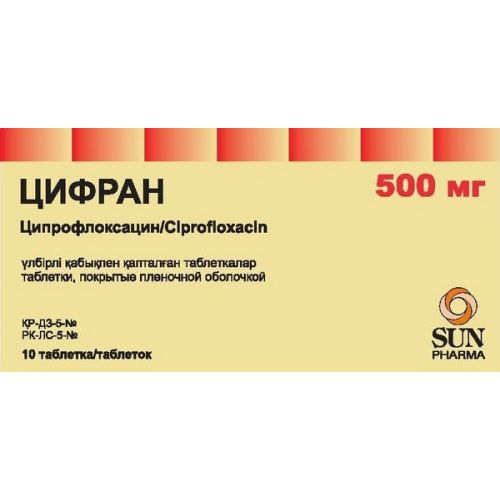
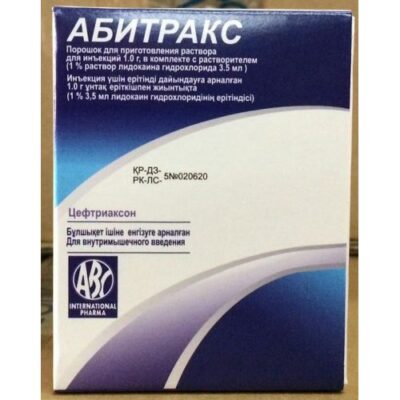
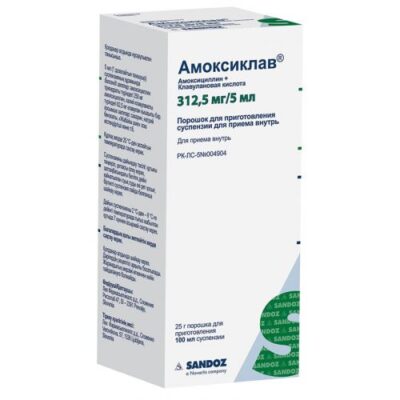
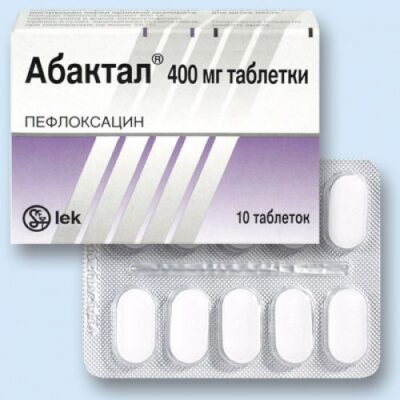
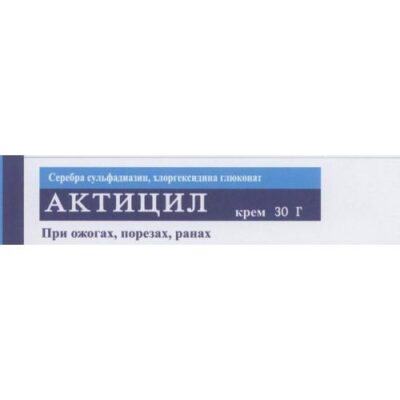
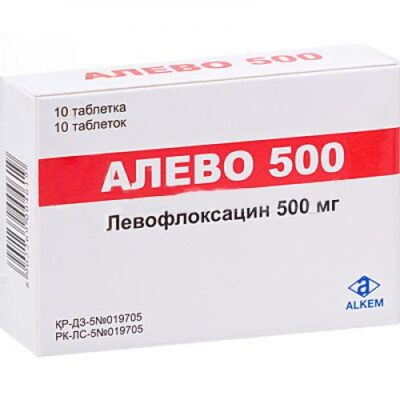
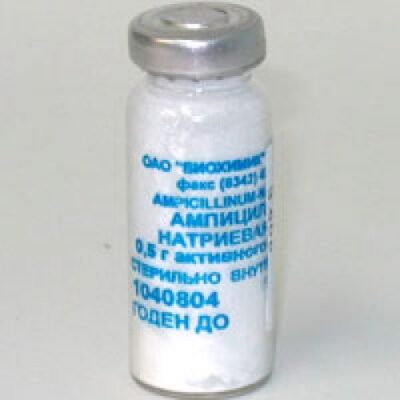
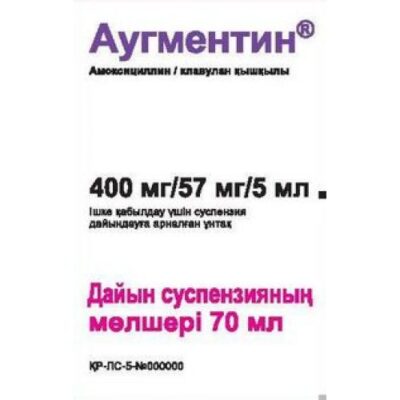
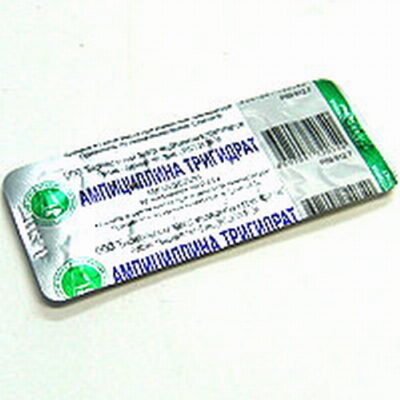
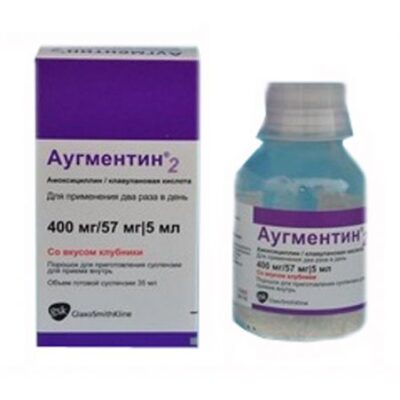
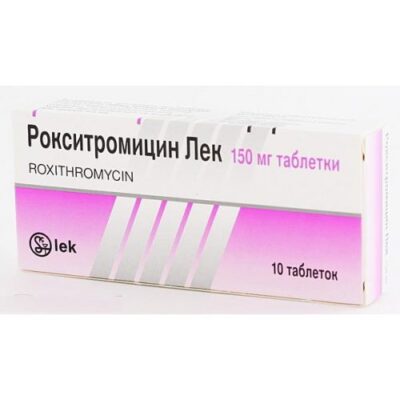






Reviews
There are no reviews yet.